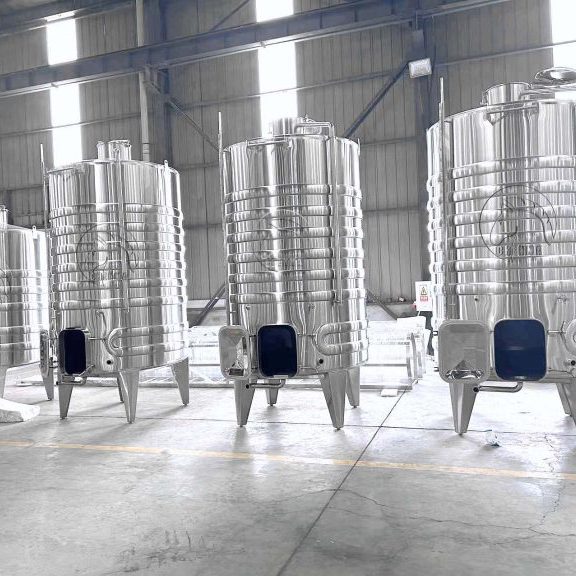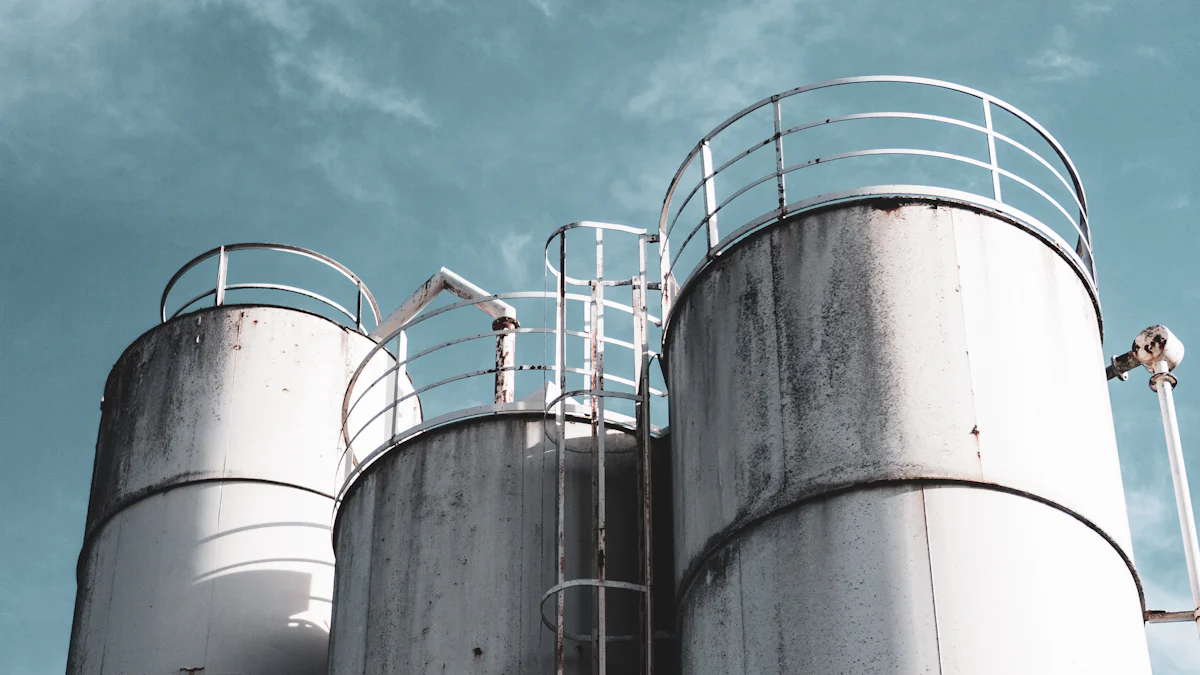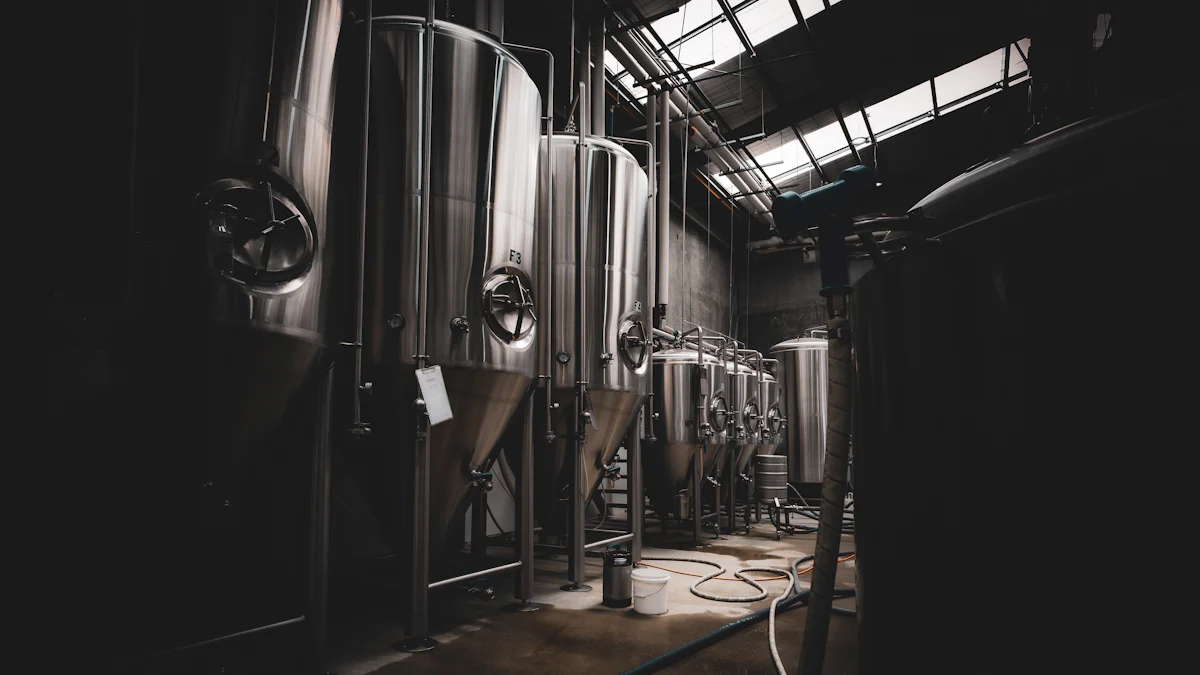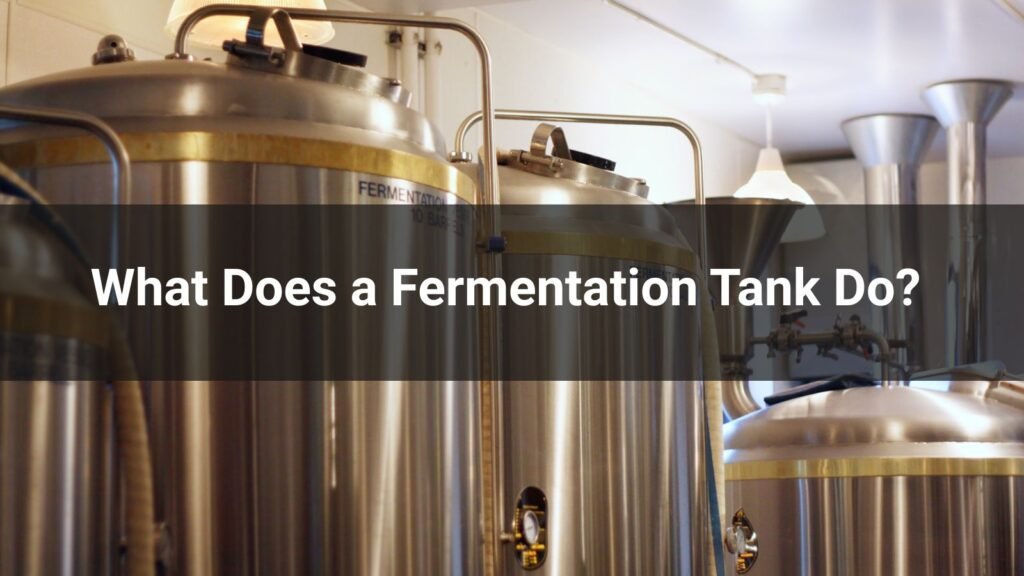
Fermentation tanks are the backbone of modern beverage production, serving as controlled environments where yeast converts sugars into alcohol and other compounds. These specialized vessels play a crucial role in wine, beer, cider, and spirits production, offering precise temperature control, contamination prevention, and optimal conditions for fermentation processes. Understanding their functions helps producers make informed decisions about equipment selection and process optimization.
Table of Contents
Primary Functions of Fermentation Tanks
Fermentation tanks serve multiple critical functions in beverage production, each designed to optimize the fermentation process and ensure product quality.
Controlled Environment Creation
The primary function of a fermentation tank is to create a controlled environment where microorganisms can convert sugars into alcohol efficiently. These tanks maintain optimal conditions including:
- Temperature regulation: Precise temperature control prevents unwanted bacterial growth and ensures consistent fermentation rates
- Oxygen management: Controlled exposure to oxygen during different fermentation stages
- pH monitoring: Maintaining proper acidity levels for optimal yeast activity
- Pressure control: Managing CO2 buildup during fermentation
Contamination Prevention
Modern fermentation tanks feature sealed designs that prevent contamination from wild yeasts, bacteria, and other microorganisms that could spoil the final product. Stainless steel construction provides non-reactive surfaces that don’t harbor contaminants and are easily sanitized.
Process Monitoring and Control
Advanced fermentation tanks include monitoring systems that track:
- Temperature fluctuations
- Specific gravity changes
- CO2 production rates
- Alcohol content development
Types and Applications
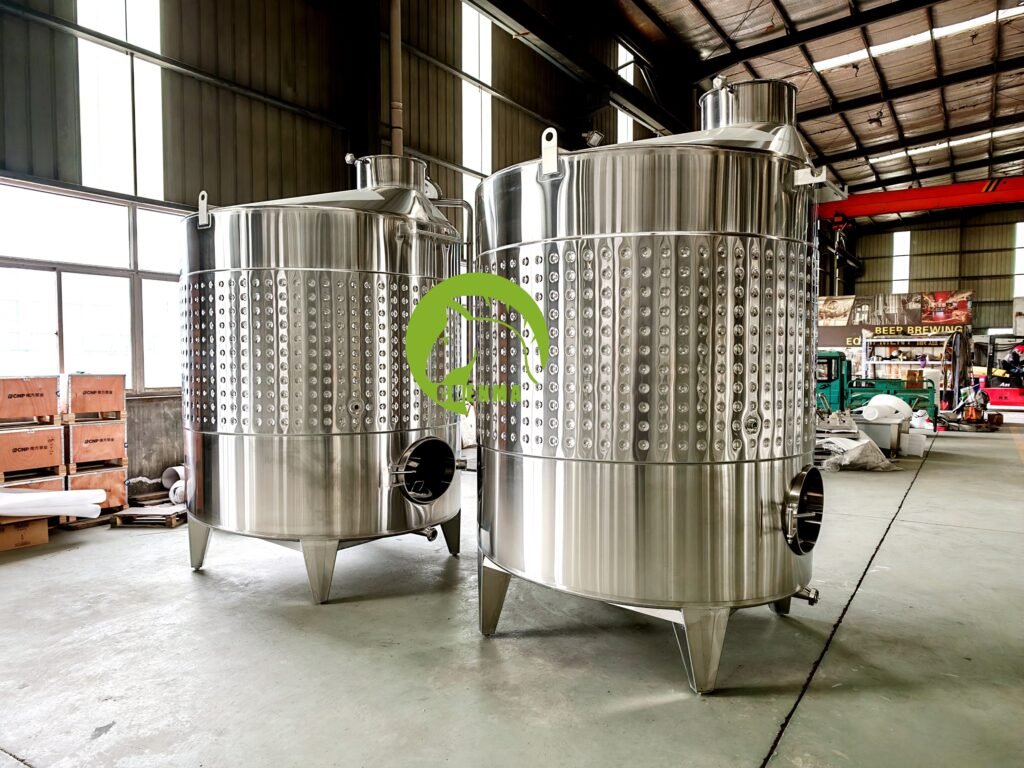
Different types of fermentation tanks serve specific purposes across various beverage industries, each optimized for particular production requirements.
| Tank Type | Primary Use | Key Features | Capacity Range |
|---|---|---|---|
| Open-top Fermenters | Red wine production | Easy cap management, pump-over capability | 500L – 10,000L |
| Closed Fermenters | White wine, beer | Pressure control, anaerobic conditions | 300L – 50,000L |
| Variable Capacity Tanks | Small batch production | Adjustable volume, floating lids | 100L – 5,000L |
| Conical Fermenters | Beer, cider | Easy lees removal, compact design | 200L – 20,000L |
Wine Fermentation Tanks
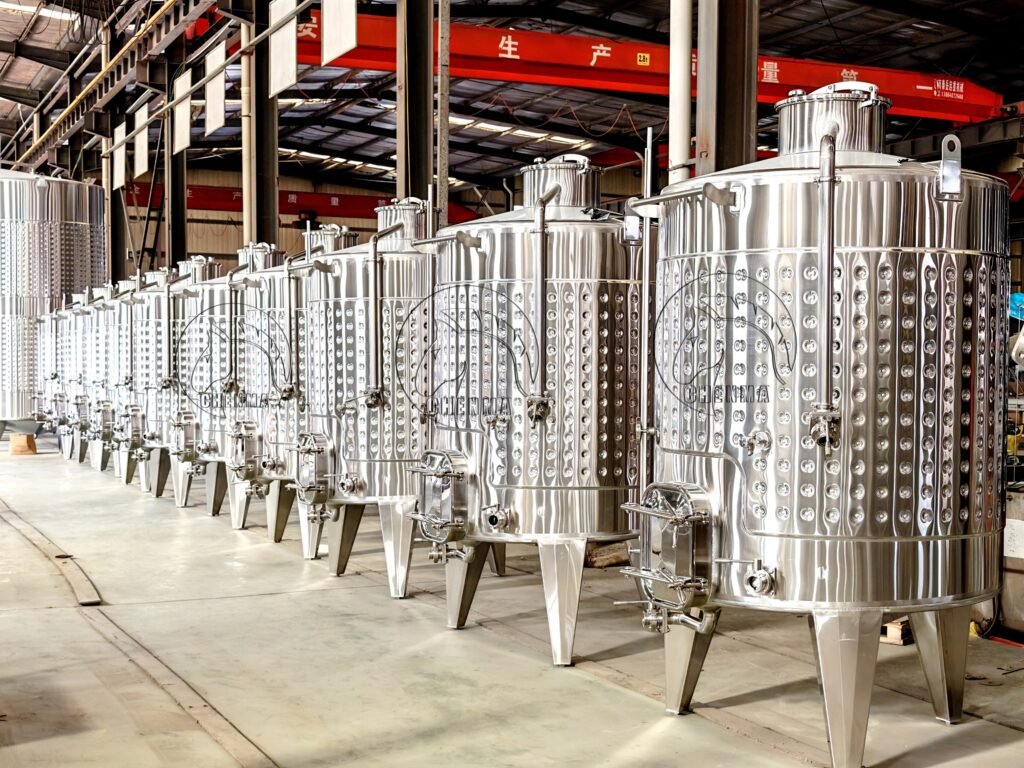
Wine fermentation tanks are specifically designed to handle the unique requirements of grape fermentation, accommodating both red and white wine production processes.
Red Wine Fermentation
Red wine fermentation requires tanks that facilitate skin contact and cap management. Open-top fermenters allow winemakers to perform punch-downs and pump-overs essential for color and tannin extraction. These tanks typically feature:
- Wide openings for easy access
- Sloped bottoms for complete drainage
- Temperature control systems
- Integrated pump-over ports
White Wine Fermentation
White wine production utilizes closed fermentation systems that protect the juice from oxidation while maintaining precise temperature control. Selecting the right fermentation tank for white wine involves considering factors such as cooling efficiency and inert gas capabilities.
Variable Capacity Wine Tanks
Variable capacity wine tanks offer flexibility for wineries producing different batch sizes. These innovative tanks feature floating lids that adjust to wine levels, minimizing headspace and oxidation risk while maximizing versatility.
Cider and Beer Production
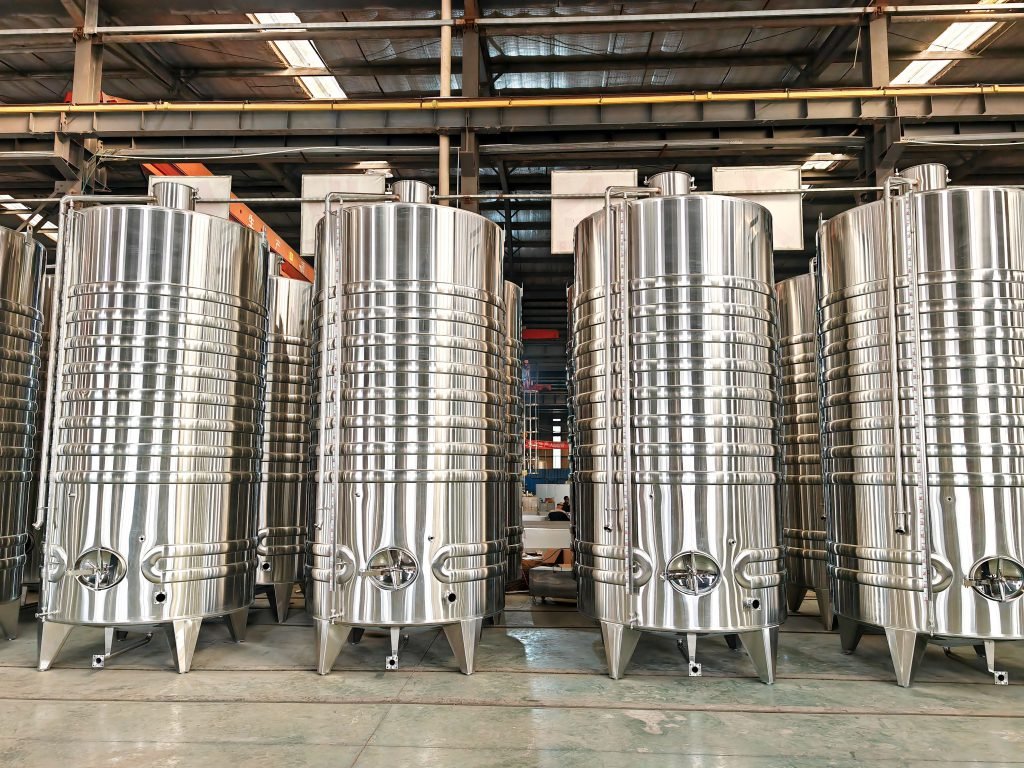
Cider Fermentation Systems
Cider fermentation requires specialized equipment that handles the unique characteristics of apple and fruit-based beverages. Cider tanks must accommodate:
- Primary fermentation with controlled temperature
- Secondary fermentation for clarity development
- Carbonation processes
- Flavor development stages
Professional cider tanks from Shandong Chenma Machinery provide the precision and reliability needed for consistent cider production, featuring advanced temperature control and easy cleaning systems.
Beer Fermentation Applications
Beer fermentation tanks serve multiple functions throughout the brewing process, from primary fermentation through conditioning and carbonation. Modern breweries utilize conical fermenters that combine fermentation and conditioning capabilities in single vessels.
Key Features and Components
Modern fermentation tanks incorporate sophisticated features that enhance process control and product quality.
Temperature Control Systems
Precise temperature management is crucial for fermentation success. Professional tanks feature:
- Glycol cooling jackets: Provide uniform temperature distribution
- Digital controllers: Allow precise temperature programming
- Insulation systems: Maintain consistent temperatures efficiently
- Multiple temperature zones: Enable gradient cooling strategies
Sanitation and Cleaning Features
Easy cleaning and sanitation are essential for preventing contamination. Quality fermentation tanks include:
- CIP (Clean-in-Place) systems
- Smooth interior surfaces
- Accessible inspection ports
- Proper drainage systems
Material Construction
Stainless steel remains the preferred material for fermentation tanks due to its durability, non-reactive properties, and ease of sanitization. High-quality tanks use 316L stainless steel for maximum corrosion resistance and longevity.
Benefits and Advantages
Professional fermentation tanks offer numerous advantages over traditional fermentation methods, making them essential for modern beverage production.
Quality Consistency
Controlled environments ensure consistent product quality batch after batch. Temperature stability, contamination prevention, and precise monitoring eliminate many variables that affect final product characteristics.
Scalability and Efficiency
Modern fermentation tanks allow producers to scale operations efficiently while maintaining quality standards. Automated systems reduce labor requirements and improve process repeatability.
Enhanced Safety
Sealed systems with proper venting protect workers from CO2 exposure while preventing contamination. Professional tanks include safety features such as pressure relief valves and gas monitoring systems.
| Advantage | Traditional Methods | Modern Fermentation Tanks |
|---|---|---|
| Temperature Control | Limited, ambient dependent | Precise, programmable control |
| Contamination Risk | High exposure risk | Minimal, controlled environment |
| Batch Consistency | Variable results | Highly consistent outcomes |
| Monitoring Capability | Manual checks only | Continuous automated monitoring |
Selection Guide for Different Needs
Choosing the right fermentation tank depends on several factors including production volume, beverage type, and operational requirements.
Capacity Considerations
Tank capacity should align with production goals and available space. Consider both current needs and future expansion plans when selecting equipment.
- Small-scale operations (100-1,000L): Ideal for artisan producers and testing
- Medium-scale operations (1,000-10,000L): Suitable for regional producers
- Large-scale operations (10,000L+): Commercial production facilities
Industry-Specific Requirements
Different beverages require specialized tank features:
Wine Production
Wine tanks require features for handling grape solids, temperature control for different varietals, and options for both red and white wine production. Professional red wine fermentation tanks offer specialized features for optimal extraction and fermentation.
Cider and Fruit Beverages
Fruit fermentation requires tanks that handle higher acid levels and provide precise temperature control for flavor development. Consider tanks with specialized coatings and advanced cooling systems.
Budget and ROI Considerations
While initial investment varies significantly, quality fermentation tanks provide excellent long-term value through:
- Reduced product loss from contamination
- Lower labor costs through automation
- Consistent quality improving market position
- Durability reducing replacement needs
Maintenance and Care
Proper maintenance ensures optimal performance and extends equipment lifespan, making regular care essential for fermentation tank operation.
Cleaning Protocols
Establish comprehensive cleaning procedures including:
- Pre-rinse with water
- Alkaline wash cycle
- Acid rinse for mineral deposits
- Sanitization before use
- Regular deep cleaning schedules
Regular Inspections
Schedule regular inspections to identify potential issues before they affect production:
- Valve and fitting checks
- Temperature system calibration
- Gasket and seal inspection
- Surface condition monitoring
Professional Support
Working with experienced manufacturers like Shandong Chenma Machinery Co., Ltd. ensures access to professional support and maintenance guidance. Our team of over 200 professionals provides comprehensive technical support, from initial installation through ongoing maintenance needs.
Located in Pingyuan County Economic Development Zone, Dezhou City, Shandong Province, Chenma Machinery offers complete turnkey solutions including process design, equipment manufacturing, installation, and technical training. Our 20,000 m² production facility manufactures equipment meeting ISO9001, ISO14001, OHSAS18001, and EU CE certifications.
Troubleshooting Common Issues
Understanding common fermentation tank issues helps maintain optimal operation:
| Issue | Possible Causes | Solutions |
|---|---|---|
| Temperature fluctuations | Cooling system problems, poor insulation | Check glycol flow, inspect insulation |
| Contamination signs | Inadequate cleaning, seal failure | Review sanitation procedures, replace seals |
| Slow fermentation | Temperature issues, nutrient deficiency | Adjust temperature, check yeast health |
| Pressure problems | Valve issues, vent blockages | Inspect valves, clear vent systems |
Conclusion
Fermentation tanks are essential equipment that transforms raw ingredients into finished beverages through controlled fermentation processes. Their primary functions include creating optimal fermentation environments, preventing contamination, and enabling precise process control. From wine and cider production to brewing operations, these specialized vessels provide the foundation for consistent, high-quality beverage production.
Understanding what fermentation tanks do and how to select appropriate equipment ensures successful beverage production operations. Whether producing artisan wines, craft ciders, or commercial beverages, investing in quality fermentation equipment from experienced manufacturers like Shandong Chenma Machinery provides the reliability and performance needed for long-term success.
For professional fermentation tank solutions, contact Shandong Chenma Machinery:
WhatsApp: 008618063421809
Email: admin@sdchenma.com
Website: www.sdchenma.com

